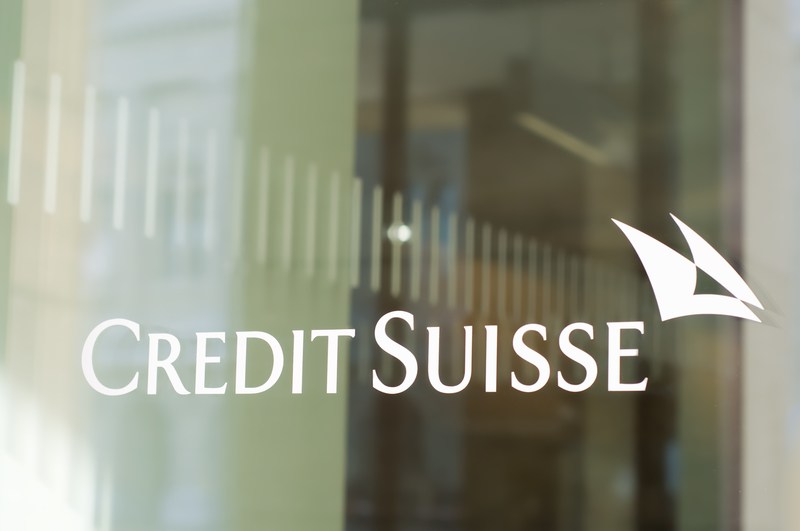Just a month ago, Credit Suisse CEO Tidjane Thiam and Deutsche Bank CEO John Cryan risked, as one hedge fund manager put it, becoming the dead men walking of European banking as they struggled to shore up their firms’ profitability. © Simon Zenger | Dreamstime.com Thursday’s results from Credit Suisse suggest Thiam may escape that fate while Cryan’s effort to revamp the German lender stalls. After a first-quarter loss, the Swiss bank posted a better-than-anticipated profit in the second quarter. Thiam is cutting the lender’s reliance on investment banking and expanding its wealth management operation. The plan is starting to deliver positive results: even as revenue tumbled by 27 percent, operating expenses fell to the lowest in more than two years and the lender’s core capital ratio increased. That discipline is precisely what investors want in an industry faced with anemic economic growth, low interest rates and regulatory curbs on risk-taking.But it’s too early to celebrate, something Thiam himself recognizes. He pointed to the fallout from the U.K.’s vote to leave the European Union and the U.S. presidential election in November. Thiam can’t control market gyrations — but they will be decisive in determining the success of his plan.
Topics:
Investec considers the following as important: Business & Economy, Credit Suisse, Editor's Choice, Featured, newsletter, Swiss Markets
This could be interesting, too:
Investec writes The global brands artificially inflating their prices on Swiss versions of their websites
Investec writes Swiss car insurance premiums going up in 2025
Investec writes The Swiss houses that must be demolished
Investec writes Swiss rent cuts possible following fall in reference rate
Just a month ago, Credit Suisse CEO Tidjane Thiam and Deutsche Bank CEO John Cryan risked, as one hedge fund manager put it, becoming the dead men walking of European banking as they struggled to shore up their firms’ profitability.

© Simon Zenger | Dreamstime.com
Thursday’s results from Credit Suisse suggest Thiam may escape that fate while Cryan’s effort to revamp the German lender stalls. After a first-quarter loss, the Swiss bank posted a better-than-anticipated profit in the second quarter.
Thiam is cutting the lender’s reliance on investment banking and expanding its wealth management operation. The plan is starting to deliver positive results: even as revenue tumbled by 27 percent, operating expenses fell to the lowest in more than two years and the lender’s core capital ratio increased.
That discipline is precisely what investors want in an industry faced with anemic economic growth, low interest rates and regulatory curbs on risk-taking.But it’s too early to celebrate, something Thiam himself recognizes. He pointed to the fallout from the U.K.’s vote to leave the European Union and the U.S. presidential election in November.
Thiam can’t control market gyrations — but they will be decisive in determining the success of his plan. A big part of Thiam’s mission involves shrinking assets, especially in the securities trading business. Credit Suisse’s so-called bad bank wants to reduce risk-weighted assets to 45 billion Swiss francs this year and 37 billion francs in 2017. This looks achievable — so far this year, the division has cut RWAs to 58 billion francs from 73 billion francs — but the task will become much harder if markets worsen.
There’s also the question of how quickly Thiam is able to grow Credit Suisse’s wealth management business, seen as a more reliable and less capital-intensive income stream than investment banking.
It’s encouraging that net new assets in the first half increased by 60 percent without gross margins being hit. But we’ve seen recent corrections in emerging markets take a toll on client flows — the last three months of 2015 saw private-banking outflows in Switzerland and abroad. The number of freshly minted millionaires is stalling and rival private banks are intensifying their push in Asia. Bernstein analysts expect Credit Suisse private banking assets to decline in 2017.
While Credit Suisse has shown it can juggle a restructuring with boosting capital, Commerzbank’s announcement this week is a reminder that these ratios can be volatile, too. The German lender’s ratio fell as regulators forced the bank to apply a stiffer risk-weighing against some assets to reflect the greater operational risk they carry. It also blamed increased pension liabilities. Both these things are beyond the control of management.
Thiam deserves credit for sticking to his strategy. But with two years of restructuring ahead, and market sentiment changing on a centime, it pays to stay cautious.
By Lionel Laurent (Bloomberg)
